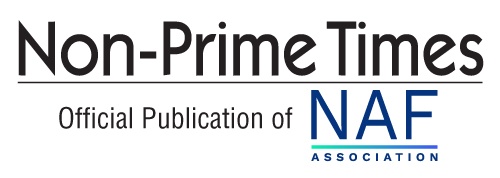In the ever-evolving landscape of financial markets, the auto securitization sector stands at the intersection of technological innovation and traditional finance. One of the pivotal advancements shaping this industry is the integration of digital contracting and eVault solutions, a transformative combination suite that is streamlining processes, enhancing efficiency, ensuring compliance, and mitigating operational risks.
Auto securitization has long been a cornerstone of today’s financial markets, allowing subprime lenders to convert pools of automotive loans into tradable securities. Traditionally, this process has been mired in paperwork, manual verification, and lengthy approval cycles. However, with the advent of digital contracting and eVault technologies, the industry is witnessing a seismic shift toward a more agile and technologically driven ecosystem.
The growth in auto securitization
Many of the lenders involved in securitization understand the importance of digitizing the collateralization process, and today a growing number of organizations are adopting these digital strategies. In our most recent Q4 Auto Finance Digital Transformation Index, this digitization adoption rate for securitization markets has continued over the past year. The fourth quarter of 2023 saw another record high of digital loan volume, and the four-year trend of digital adoption shows an increase of 15 percent, the first time the four-year trend line has turned positive. four-year trend of digital adoption shows an increase of 15 percent, the first time the four-year trend line has turned positive.
Digitizing contracts for securitized markets
Digital contracting expedites the cumbersome documentation process inherent in auto securitization. By leveraging smart contracts and digitized technology, stakeholders in subprime especially can automate the creation, execution, and enforcement of contracts. This not only reduces the time required for deal execution but also minimizes the potential for errors and disputes. The increased speed in processing transactions can lead to a more liquid and responsive market, benefitting both issuers and investors.
One of the persistent challenges in auto securitization has been the lack of transparency, leading to concerns about the quality of underlying assets. Digital contracting addresses this issue by providing a tamper-proof and transparent record of the entire contract lifecycle. Smart contracts, executed digitally, create an immutable ledger of transactions, offering a level of transparency that was previously unattainable. This newfound transparency can foster trust among market participants and attract a broader investor base.
Digital contracting is just one piece of the puzzle. Another central tool to this behind-the-scenes system is a digital asset management platform, also known as an eVault. For subprime lenders, one of the major concerns inhibiting the adoption of digital finance technology is the legality and enforceability of electronically signed documents as secure assets. These electronically signed documents need to be stored and managed in a way that ensures they retain the same legal enforceability as paper – and this is where the eVault comes into play.
How does an eVault work?
Within the context of digital lending, the digital asset management platform, or eVault, works by permanently binding electronic signatures to a document and creating a tamper-proof audit trail that demonstrates ownership and compliance. The use of an eVault establishes and supports the proper transfer of control or secured assets as regulated by UCC9-105. The process of eVaulting a document within a secure, trusted environment fulfils the legal and regulatory requirements for uniqueness and negotiability of the document as a digital financial asset. These compliant Digital Original assets are often referred to as an Authoritative Copy or Transferable Record. As interaction with the document occurs throughout its lifecycle, the eVault also enables the owner or secured party to control the access rights to the asset and track all activity regarding the asset: from signing, maintenance, sale, pledging, collateralization and securitization through to its ultimate disposition or destruction.
Why can’t lenders utilize any digital drive?
Today’s subprime lender institutions (which includes some dealers), realize there are complex regulations that must be adhered to for loans, punctuated by the Gramm-Leach-Bliley Act. Sure, digital solutions are more efficient, but compliant electronically signed documents require a higher standard of security and accessibility than provided by a simple G-Drive, for example. These documents must remain protected and accessible to authorized parties throughout the lifecycle of any transaction.
Auto dealers and lender partners must ensure that controls are in place every step of the way to track an original document and prove its unaltered authenticity and uniqueness. They must also demonstrate they can securely manage access rights and have the ability to perform ongoing audits. Lastly, they must demonstrate that original documents are transferrable, and legally admissible copies can be forwarded to multiple downstream participants through the various stages of a transaction.
As the auto securitization market continues to embrace digital solutions, future developments are likely to focus on further integration with emerging technologies. This will be key because as the industry becomes more digitized, it will become apparent that we move away from recognizing documents as the baseline for transactions, and an environment where we focus more on “data”. Furthermore, artificial intelligence and machine learning algorithms may even be employed to analyze vast datasets, offering insights into market trends, risk profiles, and portfolio performance. With this digital strategy in mind, auto lenders and their OEM/dealer partners will realize a more efficient, secure, compliant future.



